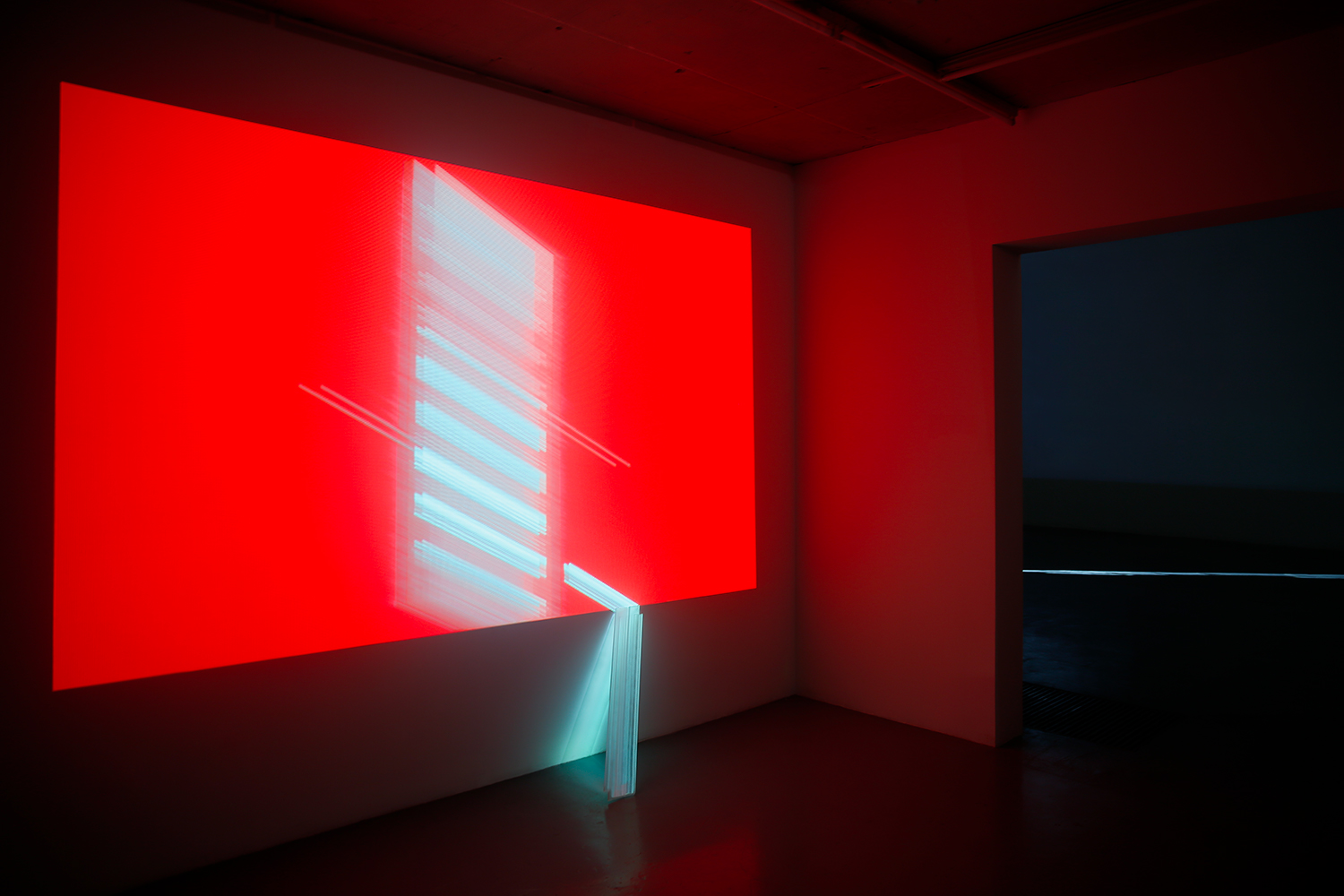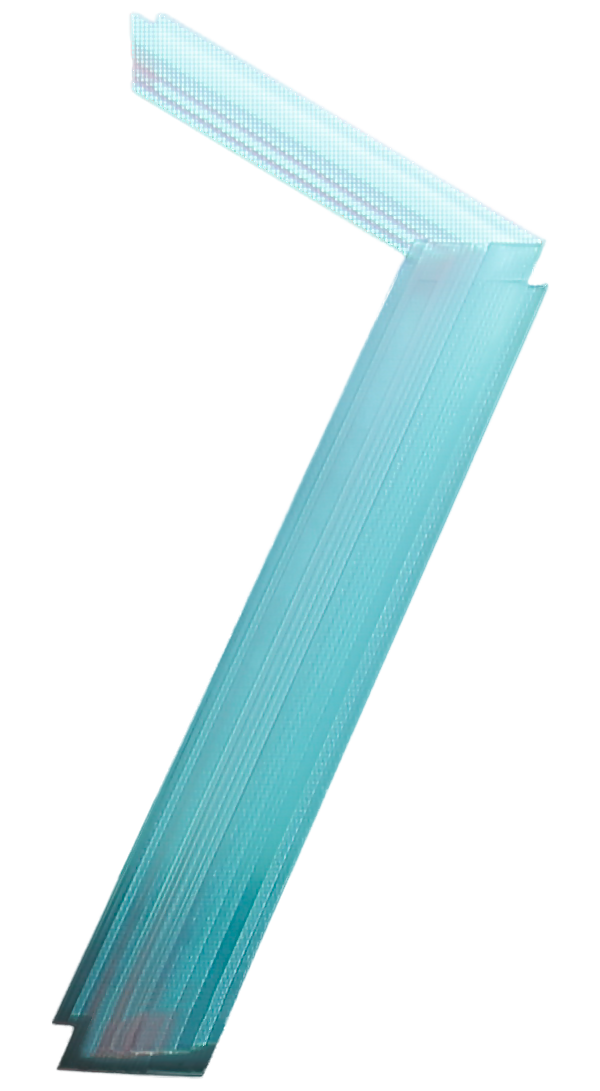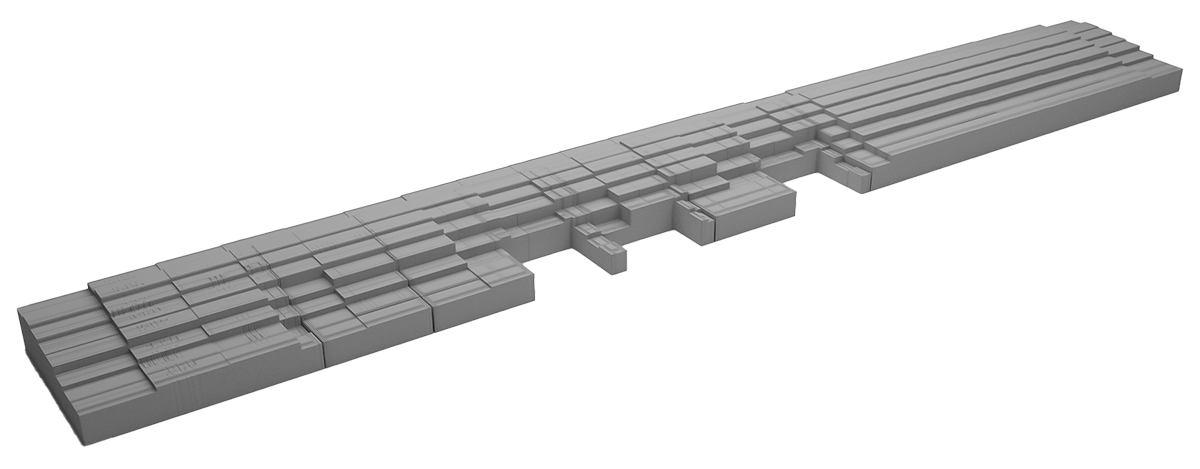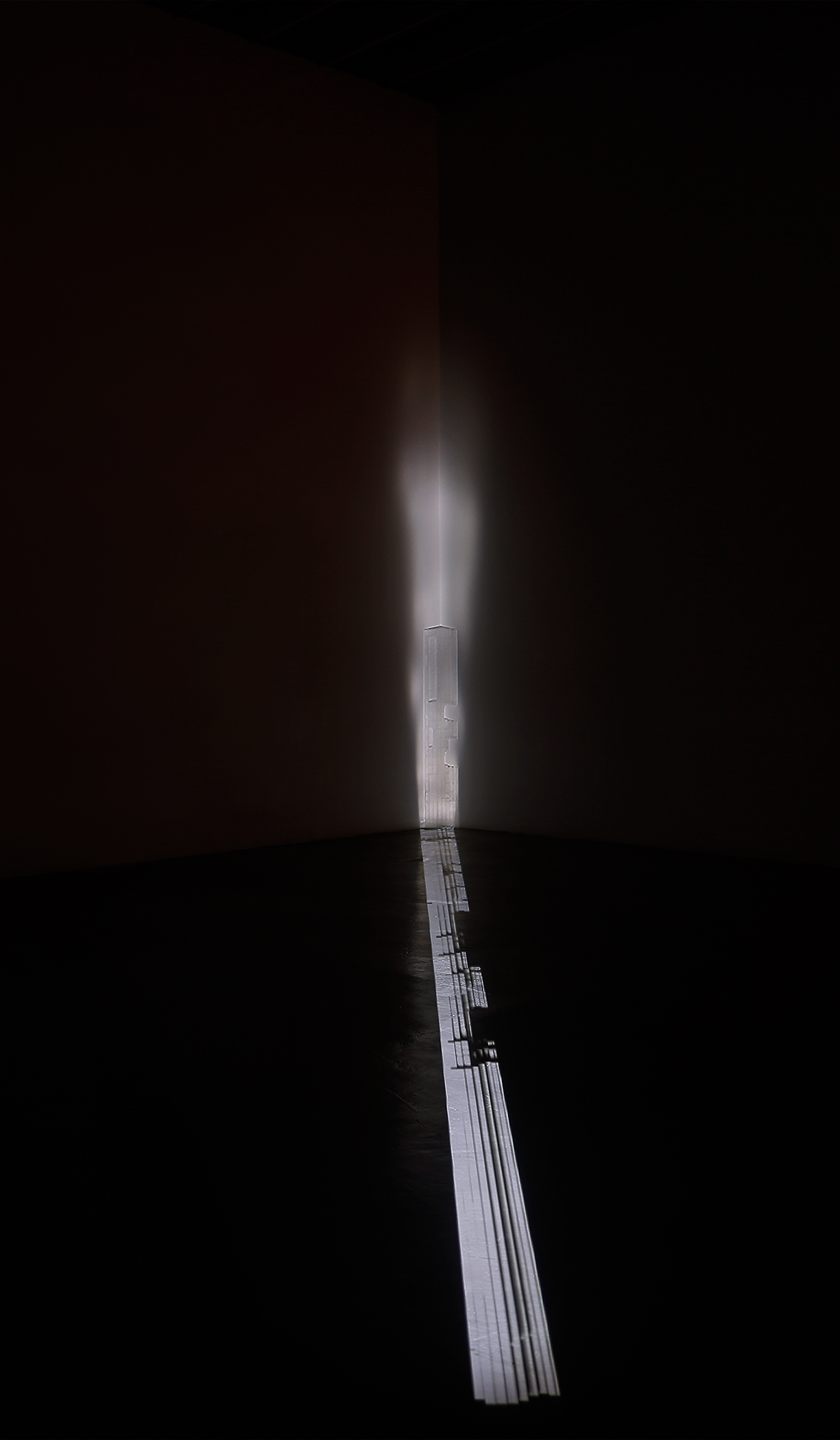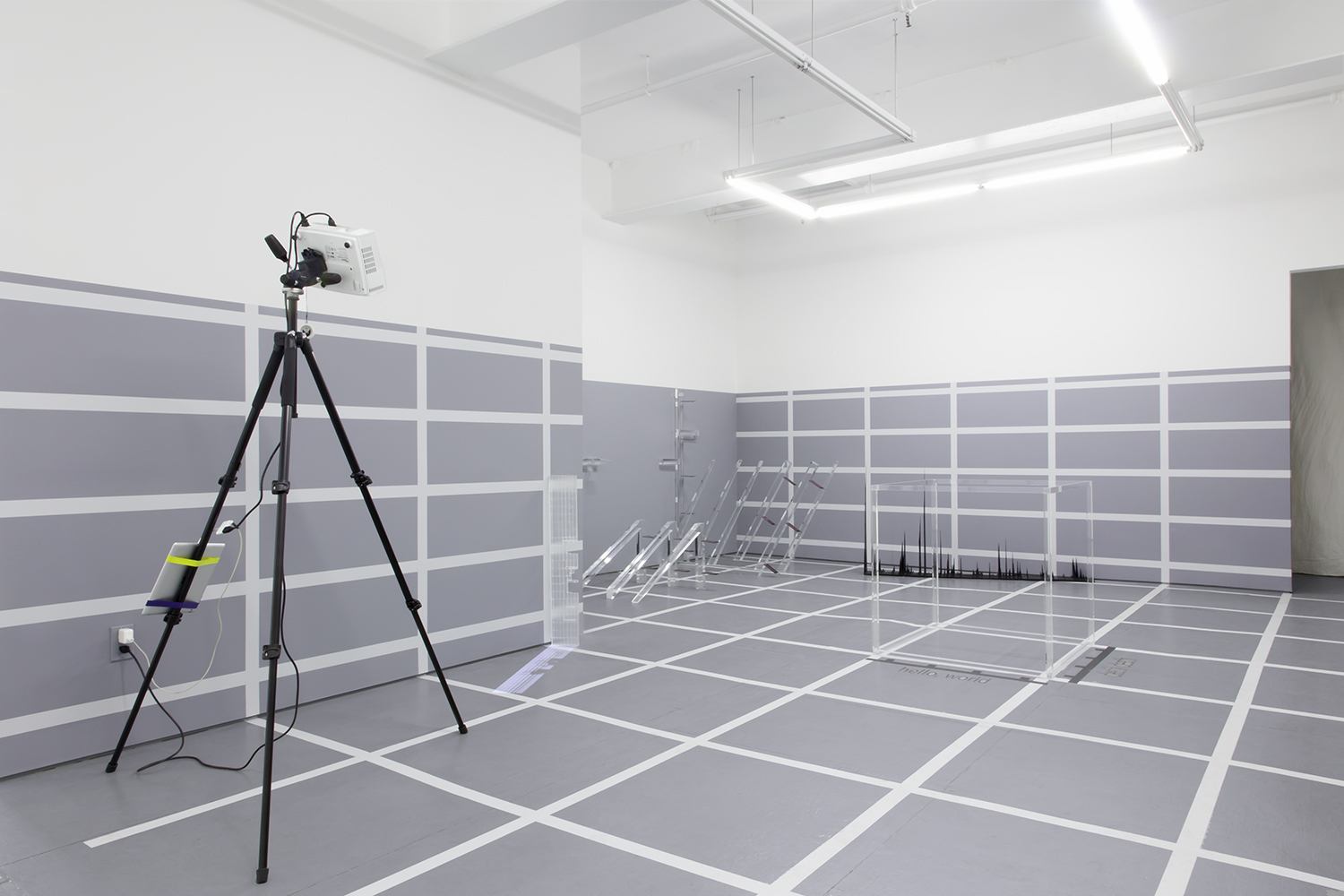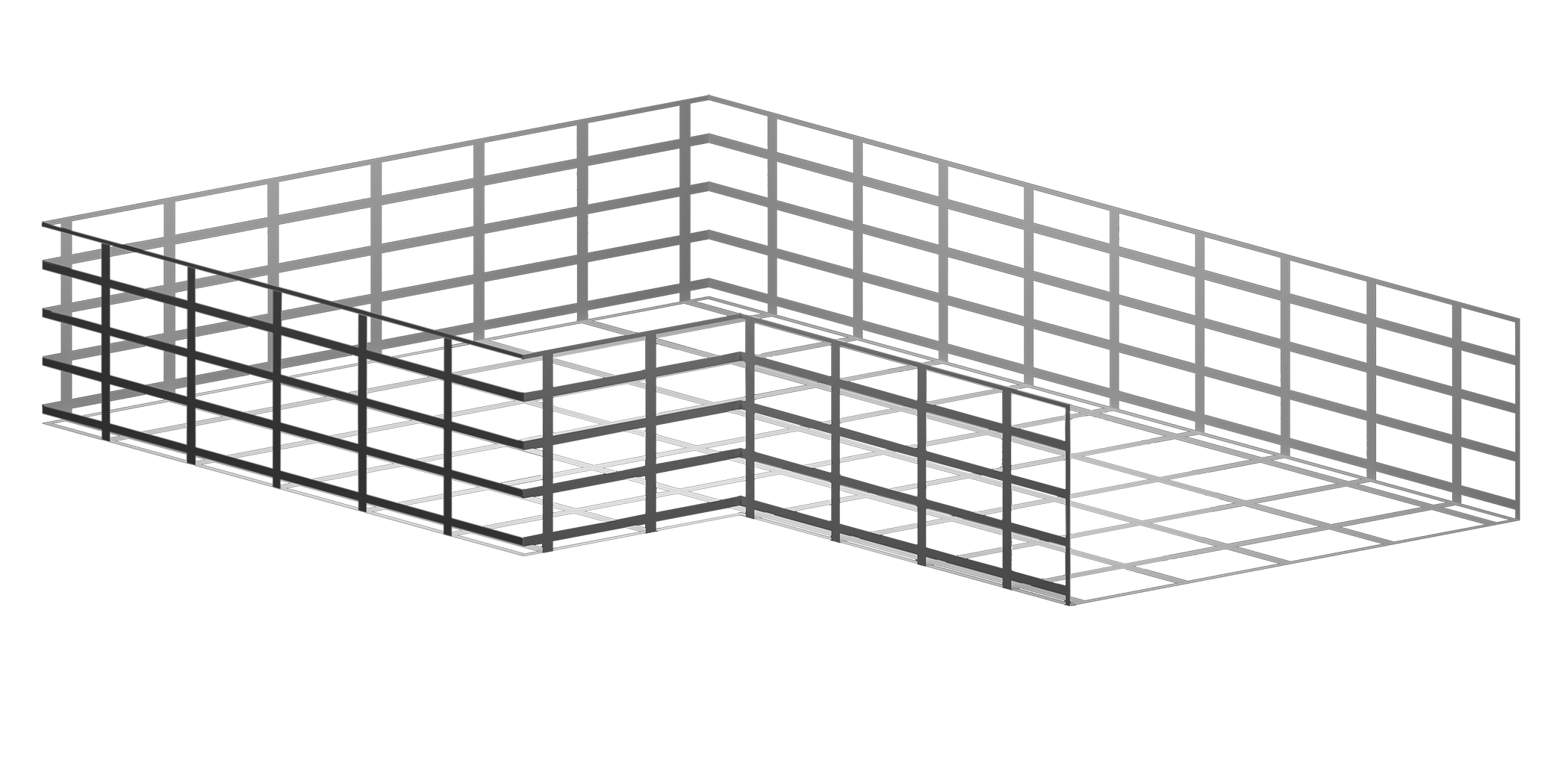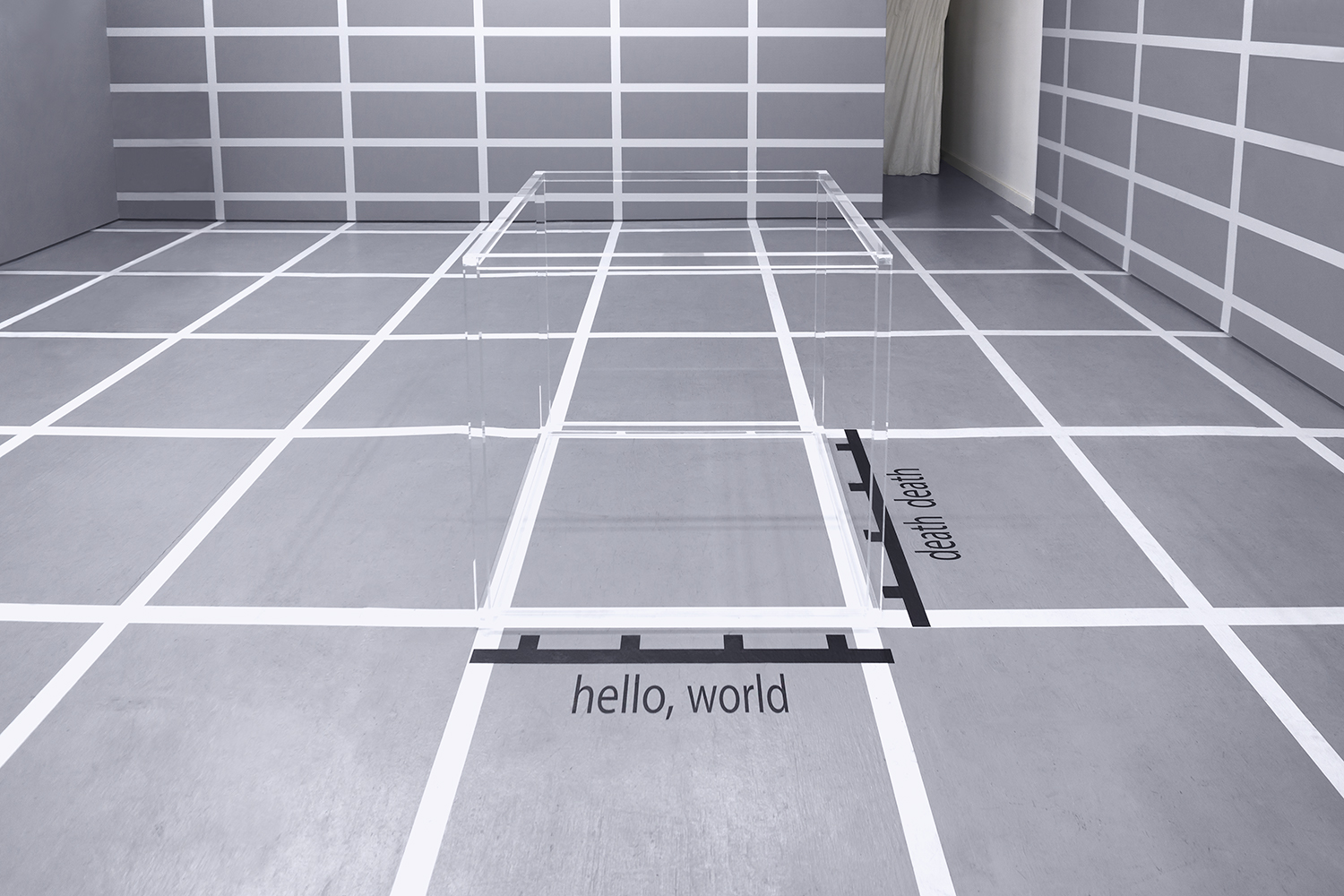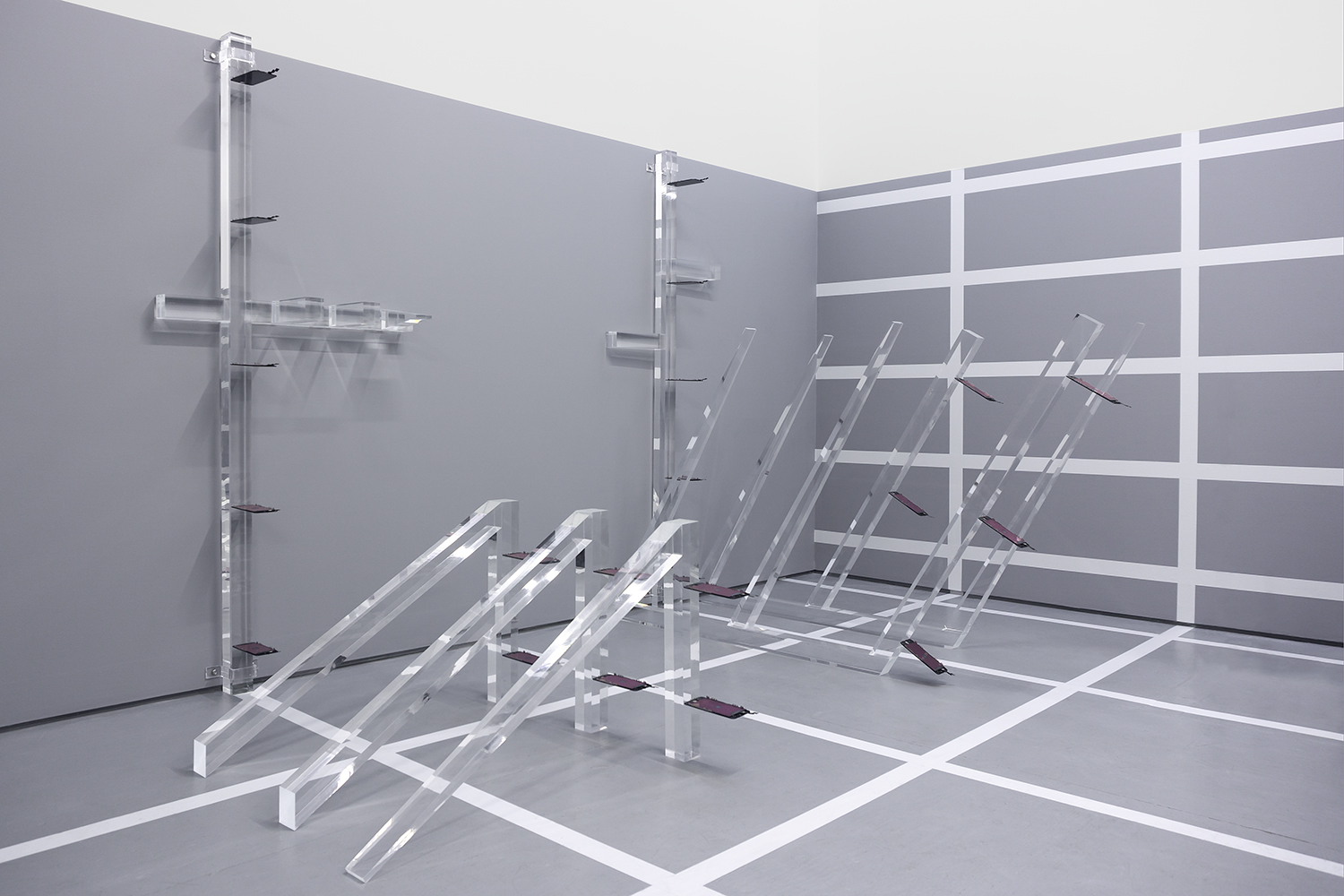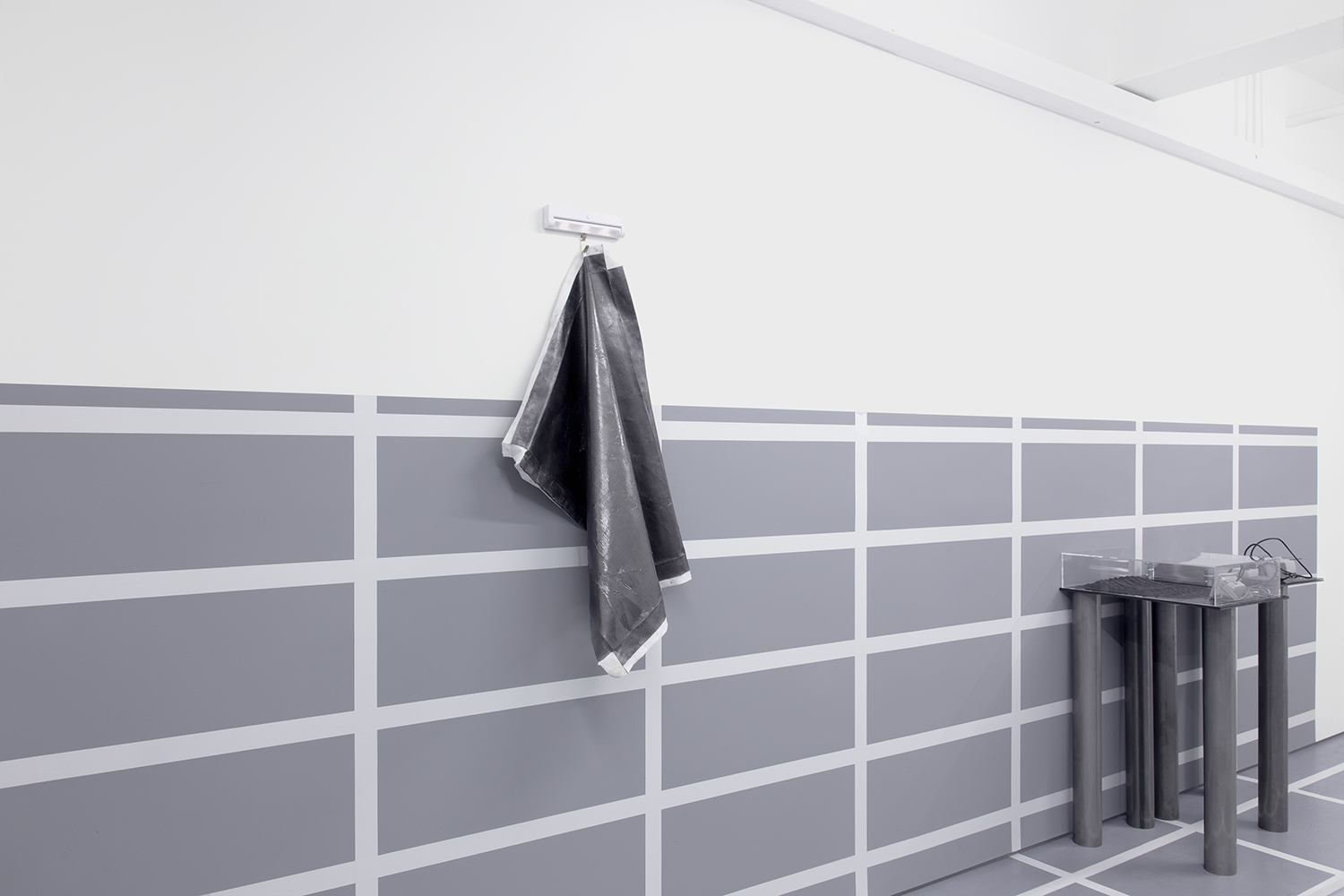Installation view, “Joshua Liebowitz | Channel Corruptions”
August 2016, CAFA International Gallery, Beijing, China
August 2016, CAFA International Gallery, Beijing, China
Photo: Naiyi Wang
(Top) Detail, Encrypt_Decrypt, 2015,
CNC-routed acrylic, digital still projection, 5 x 35 x 1.5 inches
3D model, Umbra v2, 2016
Still projection image, Umbra v2, 2016, dimensions variable
CNC-routed acrylic, digital still projection, 5 x 35 x 1.5 inches
3D model, Umbra v2, 2016
Still projection image, Umbra v2, 2016, dimensions variable
Along what bundle of points in space do experiences of digital and physicalness, as being separate from one another, collapse? And what might this look like? In these works, image processing instructions perform on data artifacts—new information, created paradoxically, at the onset of information which has been lost converting the sounds of computer hardware into visual representations—leaving an imprint of their work on the field of surrounding pixels. A copy of that digital imprint is made: further destroying, but also introducing, new information. This (re)production is encoded into a 3D model, and is then carved computationally into acrylic material: its virtual beingness, if you want, transferred into the physical dimension.
Installation views, “Joshua Liebowitz | Channel Corruptions”
August 2016, CAFA International Gallery, Beijing, China
August 2016, CAFA International Gallery, Beijing, China
Photos: Naiyi Wang
Installation view, “Joshua Liebowitz | After the Feast”
December 2016, Transmitter, Brooklyn, New York
December 2016, Transmitter, Brooklyn, New York
Photo: Carl Gunhouse
Post festum: ‘after the feast; after the fact; it is too late.’
The viewer is greeted to the default settings by the operator cube. It is transparent, and looks as if it were created by the grid itself. The grid is disorienting, which, it is remarked, shouldn’t be the case. Artifacts. .bits of data. .some standing upright. Another, of unknown image form is thrown from a projection machine across the floor of the grid: as though it were a kind of shadow, given its semblance to an adjacent slab of material. Strange cuts on this piece of material; they seem to have been made not by a human, but by a computer. The viewer wonders: what came first, the shadow-looking image, or its oddly-cut, neighboring wedge? Beyond the operating cube rests a graph: or what could be a graph. It is hard to say whether it still contains any useful information to understanding the new situation, or is instead, the remains of some type of ritualized technology dependence. The viewer is confident that the latter must be the case with what they find to their left. Still recognizable are components of the mobile experience world devices folks had used. Protruding from what seems like an outgrown mess of grid, the parts surely did not get there by themselves. Perplexed, the viewer turns around towards the default cube. In what future version of this system will answers be provided?
(Clockwise) Default Settings, 2016, Acrylic and vinyl text, 32 x 32 x 32 inches
Devotion & Livestock, 2016, Laser-cut acrylic slices, 6 x 65 x 35 inches
Firmware Update, 2016, Graphene nanoplatelet powder and acrylic on canvas, LEDs, 21 x 45 x 13 inches
The Managed Horizon, 2016, Acrylic, iPhone replacement screens, 45 x 80 x 61 inches
Devotion & Livestock, 2016, Laser-cut acrylic slices, 6 x 65 x 35 inches
Firmware Update, 2016, Graphene nanoplatelet powder and acrylic on canvas, LEDs, 21 x 45 x 13 inches
The Managed Horizon, 2016, Acrylic, iPhone replacement screens, 45 x 80 x 61 inches
Photos: Carl Gunhouse
